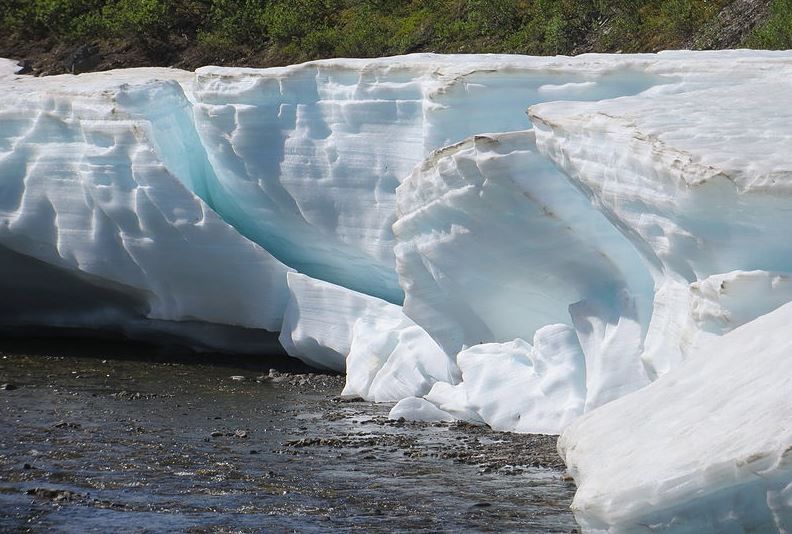
Better known as the doorway to hell or gates to the underworld, a crater in Siberia is getting larger while scientists are coming closer to revealing why. The real name of this crater is the Batagiaka crater, and it is found in eastern Siberia.
The more it expands, the more layers of nature it reveals. The latest update has been the uncovering of ancient forests.
This permafrost has literally been on thin ice over the past few years. With conditions varying, more and more holes are starting to appear, and in some locations, the tundra bubbles under people’s feet.
The crater is growing so rapidly that it’s uncovering other things like carcasses and up to 200,000 years of climate records. No wonder it’s nicknamed the ‘doorway to the underworld.’
The Batagiaka crater is the largest of its kind, and it’s still growing. The most recent measurements were taken in February of this year, and it’s estimated to be 0.6 miles long and 282 feet deep.
Locals are cautious of the area. They approach carefully and have reported hearing strange and ominous noises, which are what has led to the cryptic nicknames.
However, scientists are actually fascinated and find that the crater offers a more ‘Earthly fascination,’ according to National Geographic.
The crater is caused by melting permafrost. National Geographic explained that ‘by melting permafrost, the perennially frozen soil remains in that state for at least two consecutive years. The resulting irregular terrain of mounds and hollows is called thermokarst.’
This crater may allow scientists to examine over 200,000 years of climate change, and this could provide insight into today’s climate change problems.
The rapid melting and expansion of the crater first began in the 1960s after a large amount of deforestation allowed the sun to rapidly heat certain areas that had been previously shaded.
This process has only accelerated in recent years due to the rise of greenhouse gases and the subtle warming of the planet.
From the melting and erosion of soil comes the phenomenon referred to as ‘drunken trees.’ This is when trees are unable to grow straight, which doesn’t help to provide any shade.
Although scientists are excited to start analyzing their findings, the crater isn’t 100% a good thing.
With sediment melting so quickly, it can cause the top layer of soil to slump, which can cause massive craters like this one. They can damage pipelines, crack pavement, and even devour whole houses.
As the crater continues to grow, greenhouse gasses could be released into the atmosphere, causing more global warming.
Although the Batagiaka crater is the biggest of its kind, it’s not the only one. Dozens of similar types of melting and erosion have been happening all over the country.
Research done by Frank Gunther from the Alfred Wegener Institute in Germany concluded that the main wall of the crater has been growing at an average of 10 meters per year over the past decade.
His team suspects that because of the warming, this could lead to increased land collapse.
However, it’s not all terrible news. There’s the realization of climate data, as well as the discovery of ancient forests, pollen samples, and the remains of a musk ox, mammoth, and a 4,400-year-old horse.
There’s still a lot of research to take place, and though it’s all due to climate change–hopefully, researchers will be able to come out with some useful findings by studying our history.